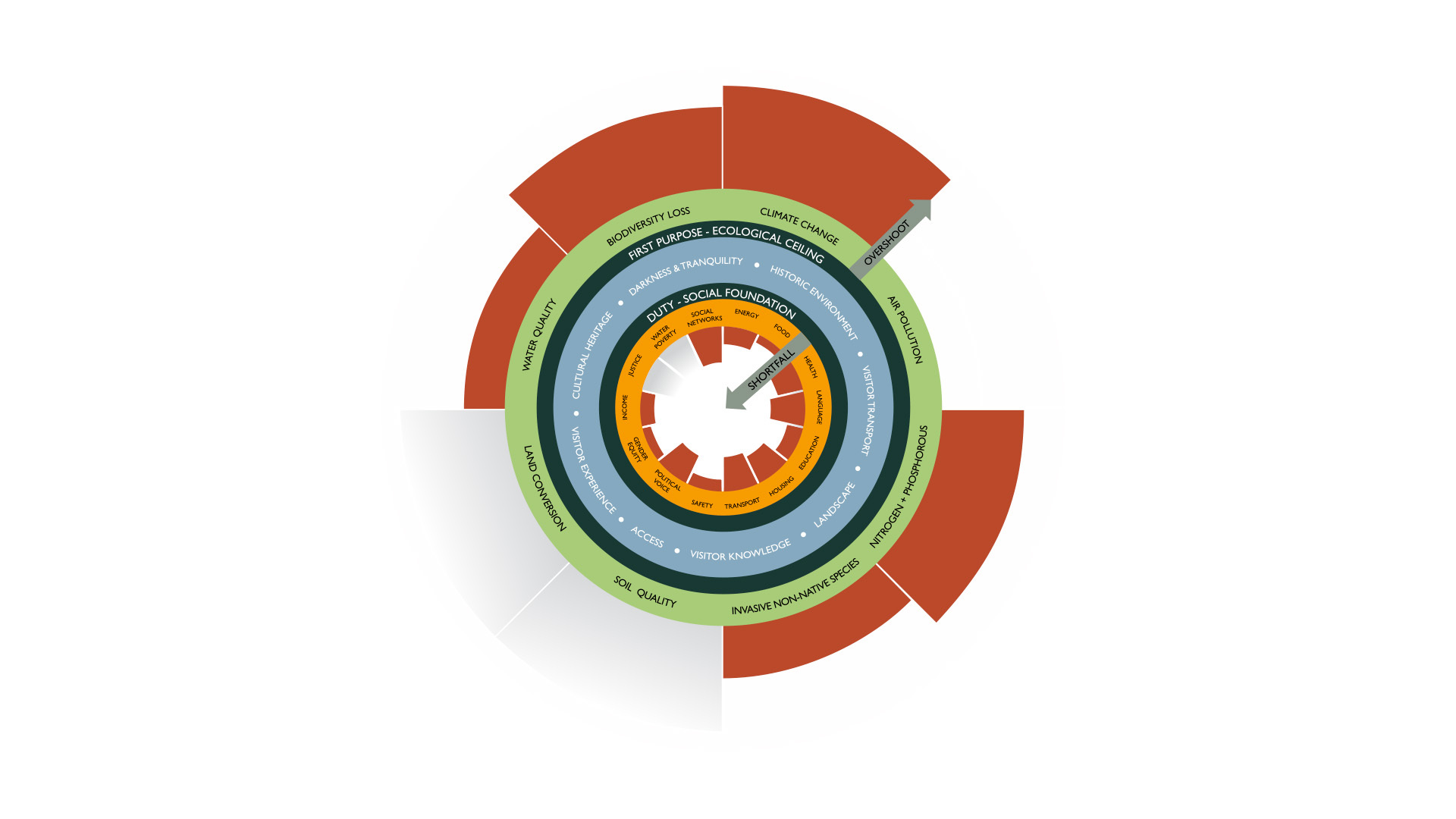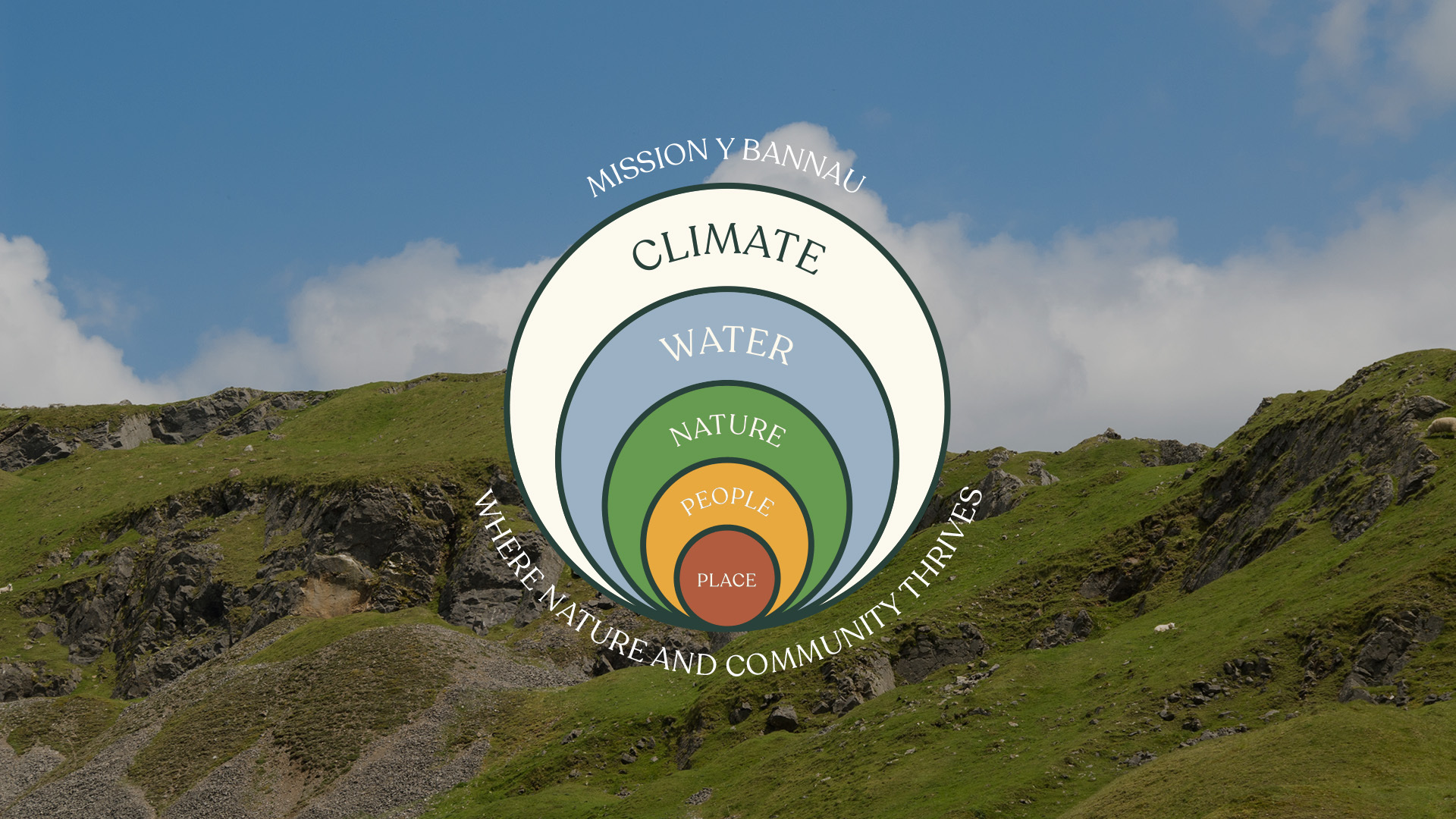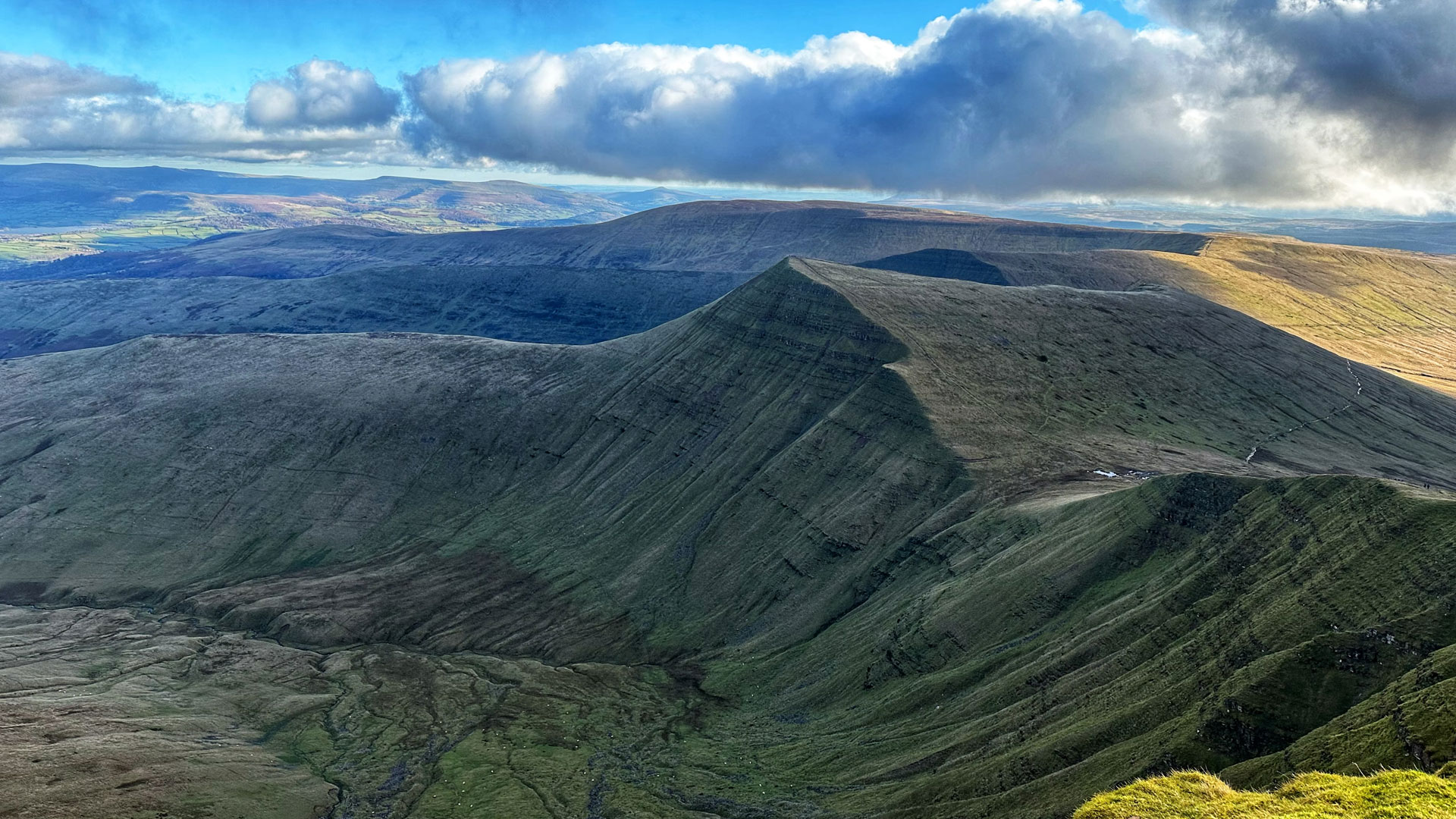Understanding Success
Y Bannau sets out how the purposes and duty of the National Park should be met working collaboratively with all partners. To help us understand the complexity of this goal we utilise an adapted version of Kate Raworth’s ‘Doughnut’ model of social and ecological boundaries.
We use this model because it helps envision a world in which people and planet can thrive in balance, just like Y Bannau envisions a National Park where the environment and people work together to provide a landscape for national wellbeing. We have applied the model to the statutory purposes and duty of the National Park Authority. The first statutory purpose is about protecting the environment. The second purpose is about connecting people with the natural and cultural environments for their enjoyment and wellbeing. The National Park Authority also has a statutory duty to support communities to thrive within the National Park. We must balance the competing demands of the two purposes enabling people to enjoy thriving ecosystems without negative impact
The Doughnut takes its name from its shape and consists of two concentric rings.
The outer ring is the ecological ceiling. This relates to the National Park’s first purpose and our ambition to restore the environmental sustainability of the National Park.
The inner ring is a social foundation. This relates to the National Park’s socio-economic duty and our ambition to ensure that no one living within the National Park is left without life’s essentials
Between these two boundaries lies a doughnut-shaped space that is both ecologically safe and socially just. A safe space in which our second purpose activities, relating to human enjoyment of the National Park for recreational purposes, can thrive.
In this way, the National Park Doughnut is a framework for understanding the successful implementation of our statutory purposes and duty. It is also a way of showing that any activity that we undertake towards our second purpose has to take place within social and ecological boundaries, without causing harm either way.

Understanding The Challenge
The National Park Doughnut helps us to understand the complex relationship between people and planet and how human wellbeing is reliant on the environment and society working in harmony.
The image above expresses the current state of the National Park in relation to human wellbeing and the environment. Each dimension is measured against at least one key indicator. The red wedges show the extent of the shortfall or overshoot in the ideal implementation of our purposes and duty. For some sectors such as climate change, and housing – the shift needed to get back into the Doughnut is huge. The aim of Y Bannau is to eliminate all of the red from the Doughnut diagram, and the missions are in response to the biggest over-shoots. As we implement Y Bannau, the Doughnut model will help us understand the Plan’s impact in the real world.










